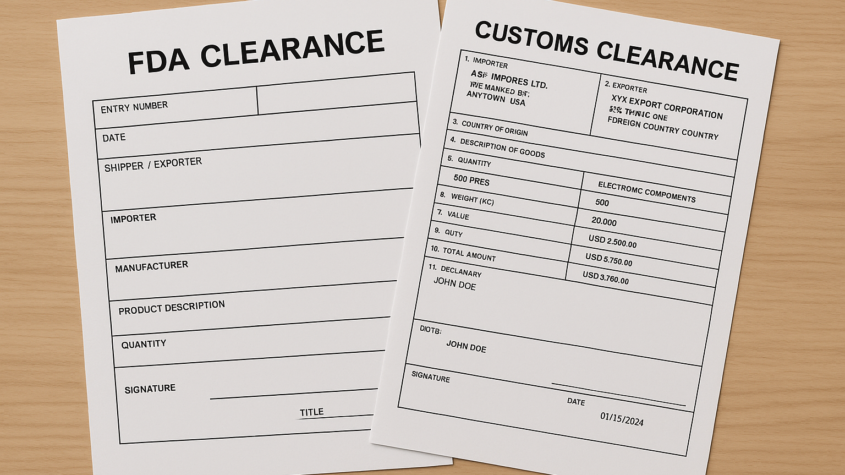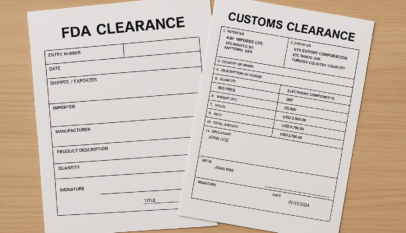Customs Clearance Solutions: Streamlining Your International Shipping Process
Navigating the complexities of international trade requires a solid understanding of customs clearance solutions. Businesses often struggle with regulations, documentation, and compliance, which can lead to delays and added costs. Customs clearance solutions streamline this process, ensuring that goods move smoothly across borders while adhering to legal requirements.
In today’s global market, efficiency is key. Delays in customs can result in lost revenue and frustrated customers. By implementing effective customs clearance strategies, companies can enhance their logistics operations and maintain a competitive edge.
Understanding the intricacies of customs regulations is essential for any business involved in import or export. With the right customs clearance approach, organizations can not only minimize disruptions but also optimize their operations for better profitability.
Essentials of Customs Clearance
Customs clearance is a vital component of international trade. It entails a series of procedures, documentation, and regulations that ensure goods cross borders legally and efficiently. Understanding these essentials helps streamline the process and avoid costly delays.
Understanding the Customs Clearance Process
The customs clearance process involves several steps that must be followed for the successful entry or exit of goods. Initially, customs declarations are submitted, providing details about the shipment. This includes information on the nature of the goods, their origin, and their destination.
Once submitted, customs authorities review the documentation. They assess whether the goods comply with local laws and regulations. Any discrepancies can cause delays. It’s important to be prepared for inspections, where customs officials may examine the cargo to ensure compliance.
Efficient management of this process can minimize transit time and reduce the risk of incurring fines or penalties.
Key Documentation for Customs Clearance
Several key documents are essential for smooth customs clearance. These include:
- Commercial Invoice: Provides details of the transaction between the buyer and seller.
- Bill of Lading: Serves as a shipment receipt and shows the terms of the agreement.
- Packing List: Lists the contents of the shipment, aiding in inventory checks.
- Certificate of Origin: Confirms the origin of the goods, which can affect tariffs.
Having accurate and complete documentation is crucial. Errors or missing paperwork can lead to substantial delays and additional costs.
Importance of Accurate Tariff Classifications
Accurate tariff classifications are critical in customs clearance. They determine the duty rates applied to imported goods. Each product falls under a specific tariff code, which reflects its type, use, and economic tariff implications.
Misclassification can result in underpayment or overpayment of tariffs, potentially leading to lengthy audits or fines. It’s advisable to consult the Harmonized System (HS) codes relevant to the goods being imported or exported. Proper classification ensures compliance and can lead to cost savings.
Roles and Responsibilities of Customs Brokers
Customs brokers play a significant role in facilitating customs clearance. They act as intermediaries between importers or exporters and customs authorities. Their responsibilities include preparing and submitting necessary documentation, ensuring compliance with regulations, and advising clients on tariff classifications.
Brokers possess extensive knowledge of customs laws and procedures. They help navigate the complexities of international trade. This expertise can significantly reduce the risk of delays and expedite the clearance process. Engaging a reliable customs broker can enhance efficiency and foster smoother business operations.
Advanced Customs Strategies
Effective customs clearance relies on advanced strategies that optimize compliance, mitigate risks, and leverage opportunities for cost savings. Strategies in this section focus on maximizing benefits from trade agreements, enhancing payment systems, ensuring regulatory adherence, and assessing risks.
Leveraging Free Trade Agreements
Leveraging Free Trade Agreements (FTAs) can significantly reduce duties and tariffs on imported goods. Companies should thoroughly understand the terms of relevant FTAs to maximize their benefits.
Key steps include:
- Confirming Origin: Establish product origin to ensure eligibility.
- Documentation: Maintain proper documentation to support claims.
- Regular Training: Train staff on FTA rules to avoid compliance issues.
FTAs can create competitive advantages by lowering costs, so companies that strategically utilize them will thrive in cross-border trade.
Implementing Efficient Duty Payment Systems
An efficient duty payment system streamlines financial compliance and enhances predictability in cash flow management. Selecting the right system involves:
- Automated Processes: Utilize software to automate duty calculations.
- Payment Scheduling: Implement scheduling to avoid late payments.
- Real-Time Reporting: Ensure access to real-time financial data to facilitate decision-making.
These systems help organizations minimize unforeseen expenses and maintain compliant operations.
Navigating Compliance and Regulations
Compliance with customs regulations is essential for avoiding fines and delays. Companies must stay informed about the continually changing regulatory landscape. Effective compliance strategies include:
- Regular Audits: Conduct audits to identify potential compliance issues.
- Expert Consultation: Engage customs brokers or legal advisors for clarity on complex regulations.
- Training Programs: Implement training for employees on customs compliance practices.
These measures help organizations maintain smooth operations and avoid costly disruptions.
Assessment and Management of Customs Risks
Assessing customs risks is vital for preventing financial loss and operational delays. Organizations should adopt a proactive approach to risk management. Essential practices include:
- Risk Identification: Continuously identify potential risk areas in logistics.
- Mitigation Plans: Develop and implement strategies to mitigate identified risks.
- Monitoring and Review: Regularly monitor compliance and adjust strategies as needed.
By effectively managing customs risks, organizations can enhance their operational resilience and ensure sustainable growth.
British Virgin Islands Company Registry Explained: Key Facts and Procedures
The British Virgin Islands company registry is a centralized system that maintains detaile…














